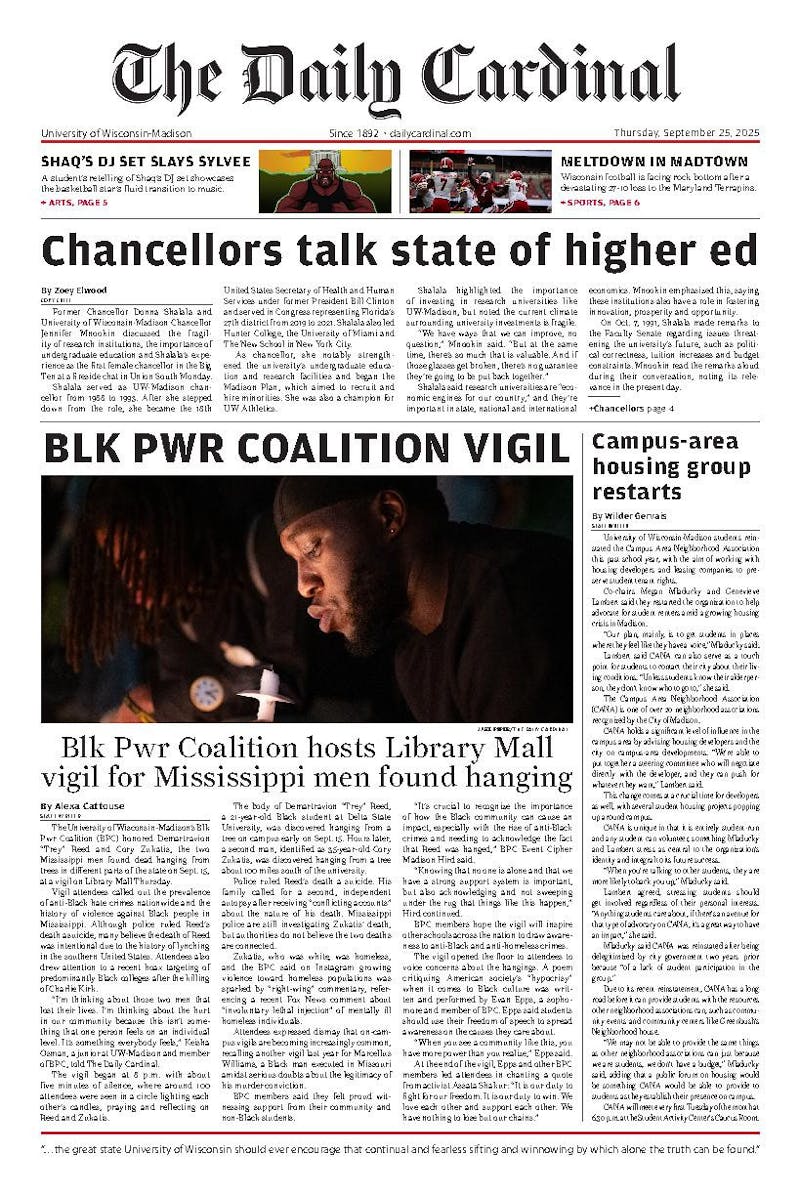Characterized by its gentle colors and dreamy soft shapes, watercolor is not the first medium many would associate with depictions of violent and severe conflicts. As the Madison Watercolor Society so adeptly illustrates in their latest exhibit at the Overture Center, titled Borders and Barriers,"" watercolor is more than capable. The society, founded in 1983, opened the exhibit on Oct. 22, showcasing a variety of local artists' meditations on what barriers and borders are in their own lives.
While the title was selected because of contemporary political issues in the news, the many pieces cover a much broader spectrum dealing with barriers from illegal immigration, freedom and war to more personal issues such as mental illness and loneliness.
Strong political positions are common choices of the artists, and each portrays them in a unique and interesting way. Among the most vibrant is Irene Olson's ""No End in Sight."" Olson's message is evident through in her volatile choice of colors and chaotic composition. She contrasts images of armed soldiers, the KKK, blood, explosions and barbed wire with the iconic Statue of Liberty, a Muslim woman, a cemetery and traditional African masks. Giving the backgrounds and foregrounds equal weight, the image overwhelms the viewer, communicating the idea set forth in the title very well.
Other paintings rely less on shocking and dramatic colors and rather appeal to more sensitive and subtle emotions. Lucy Schonfeld's ""Her Name is Maria"" depicts a young girl behind a chain-link fence clutching it with delicate fingers and pressing her face up against the cold metal, trying to sneak a peak at what's on the other side. Schonfeld uses color more modestly, allowing the subtle, longing expression in the girl's twinkling eyes to carry the emotional weight.
As this obvious barrier theme continues, the subjects get more abstract as interpretations get broader. A beautiful work by Carol Roso depicts ""The Barrier of Mental Illness"" with solid areas of color instead of any distinct images at all. As one of the more abstract pieces in the collection, Roso lets the color do all the talking by playing with contrast and unity in his composition. Other artists, who also favor abstract techniques, offer critiques on patriotism, politicians and convergence.
Moving toward what on the surface represents a more mundane and average subject, artist Susan Young offers what may be one of the collection's most interesting and compelling pieces in ""The History of Freedom Lost."" Her curious choice of dogs as the subject matter and unconventional composition challenges the observer to look beyond the dog to how it could represent domestication and the loss of freedom suggested in the title.
The collection represents a wide range of watercolor techniques. There are subject matters provoking the viewers to constantly broaden their ideas of borders and barriers, from pastoral scenes to cultures divided by war. The objects are as complicated and straightforward as mosques to as simple as a bunch of asparagus, begging to be representative of much more.






